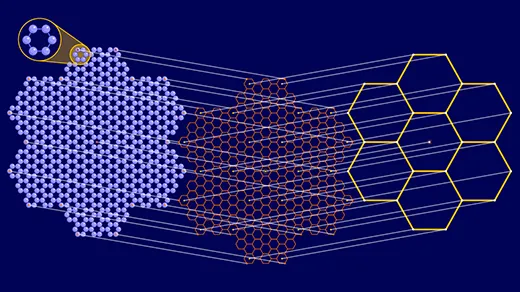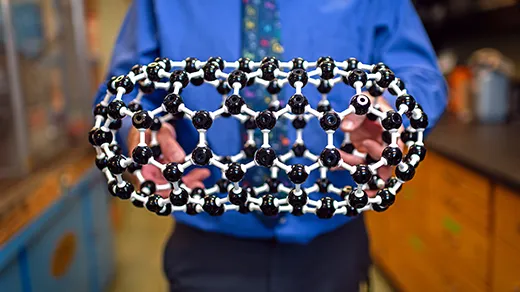What's up in
Materials science
Latest Articles
The Simple Geometry That Predicts Molecular Mosaics
By treating molecules as geometric tessellations, scientists devised a new way to forecast how 2D materials might self-assemble.
‘Fullertubes’ Join the Family of Carbon Crystals
The buckminsterfullerene revolution never came, but some researchers are eagerly exploring the properties of newfound carbon crystals known as fullertubes.
New Chip Expands the Possibilities for AI
An energy-efficient chip called NeuRRAM fixes an old design flaw to run large-scale AI algorithms on smaller devices, reaching the same accuracy as wasteful digital computers.
Physics Duo Finds Magic in Two Dimensions
In exploring a family of two-dimensional crystals, a husband-and-wife team is uncovering a potent variety of new electron behaviors.
Quantum Complexity Tamed by Machine Learning
If only scientists understood exactly how electrons act in molecules, they’d be able to predict the behavior of everything from experimental drugs to high-temperature superconductors. Following decades of physics-based insights, artificial intelligence systems are taking the next leap.
A New Theory for Systems That Defy Newton’s Third Law
In nonreciprocal systems, where Newton’s third law falls apart, “exceptional points” are helping researchers understand phase transitions and possibly other phenomena.
How Animals Color Themselves With Nanoscale Structures
Animals sculpt the optical properties of their tissues at the nanoscale to give themselves “structural colors.” New work is piecing together how they do it.
The Materials Scientist Who Studies the Innards of Exoplanets
Federica Coppari uses the world’s most powerful laser to recreate the cores of distant worlds.
Charlie Marcus Knows That Quantum Facts Aren’t Complicated
The secret to making a qubit for future quantum computers might depend on knowing how to tie knots in unusual materials, argues the physicist Charlie Marcus.








